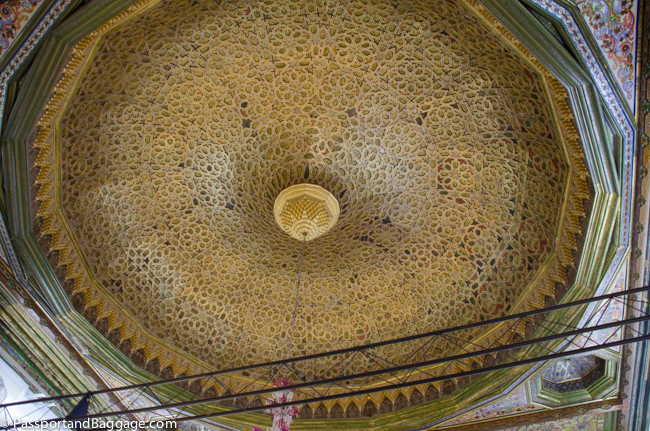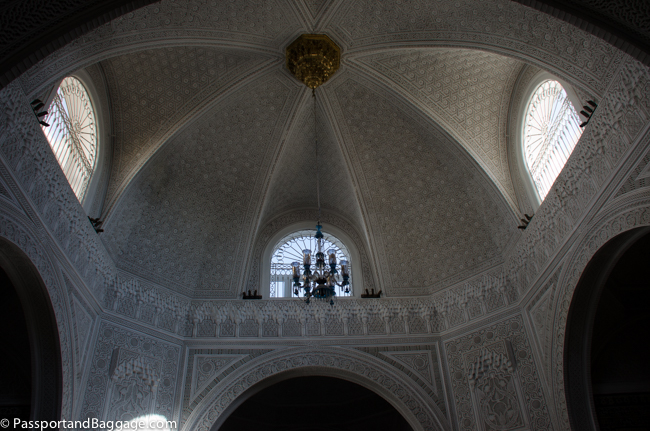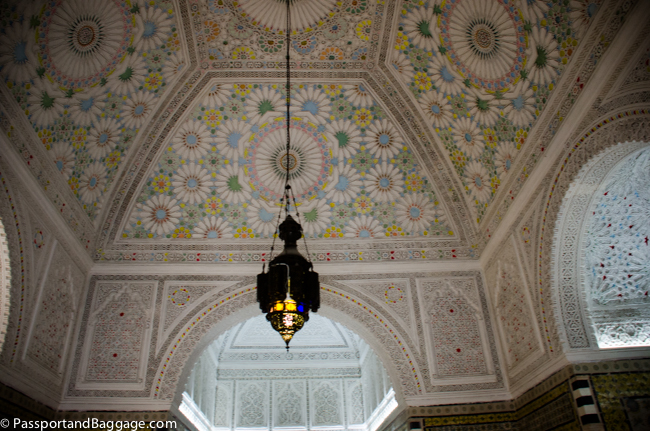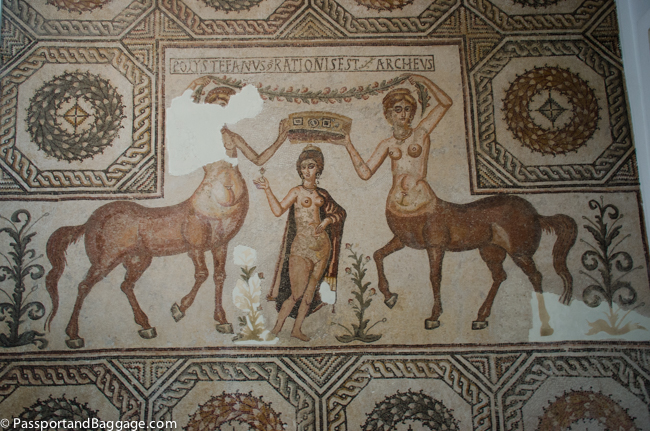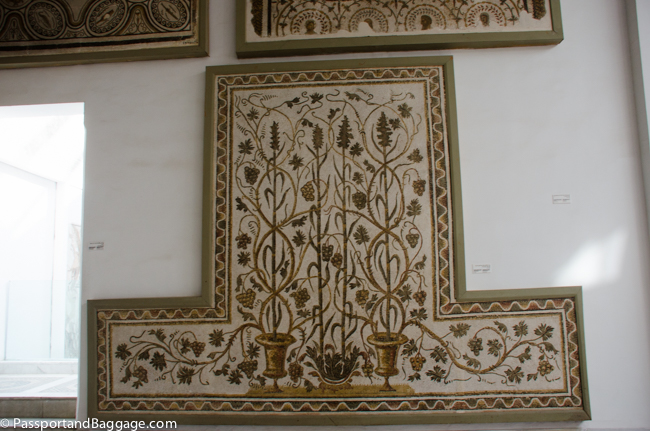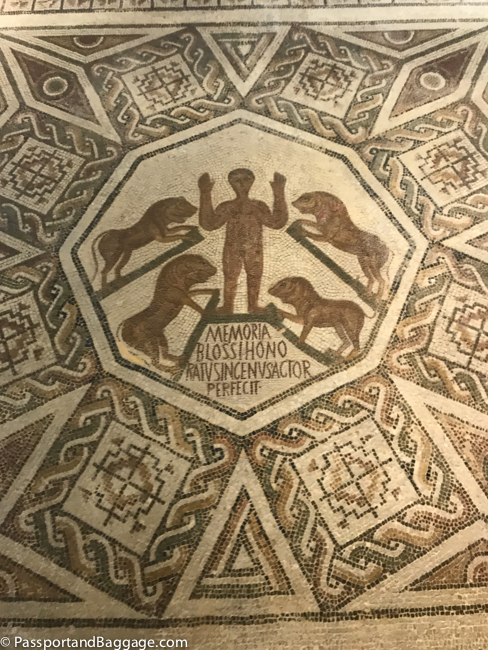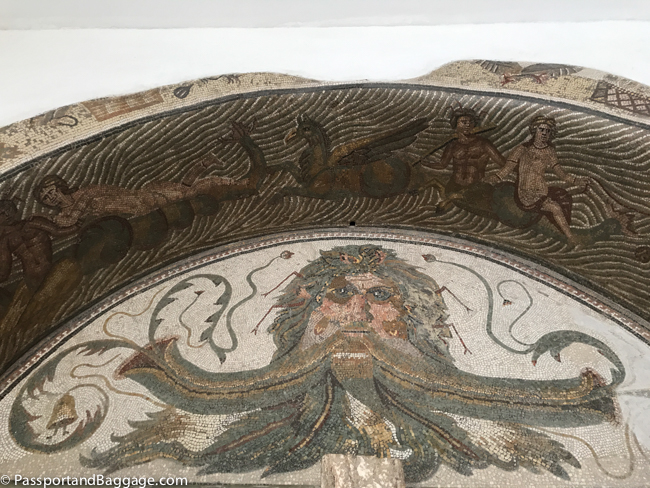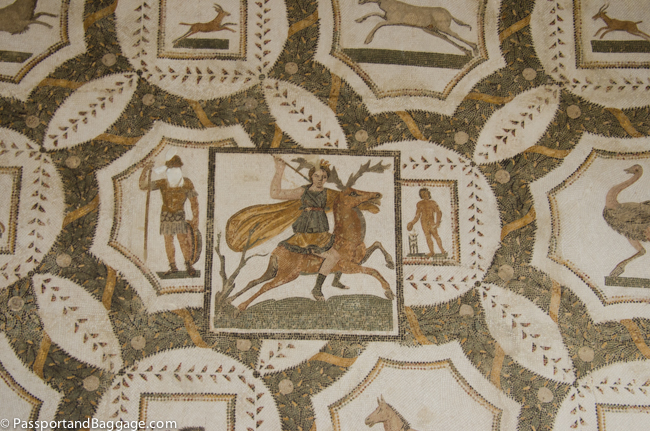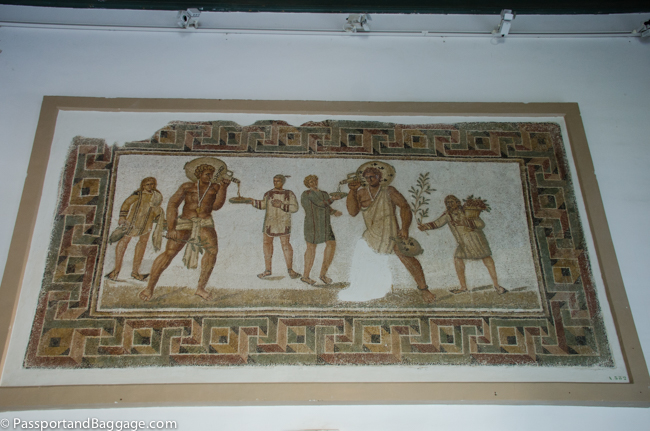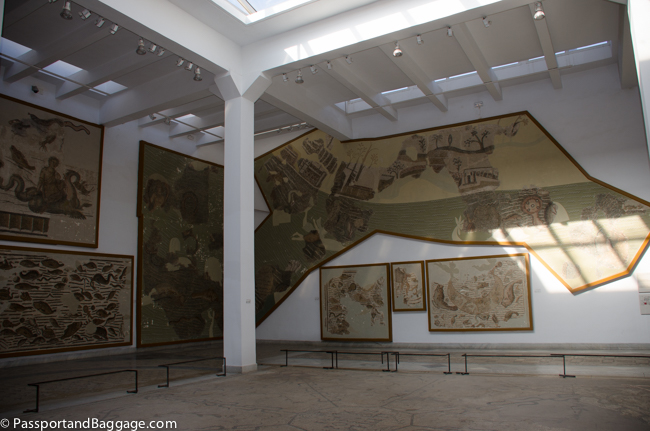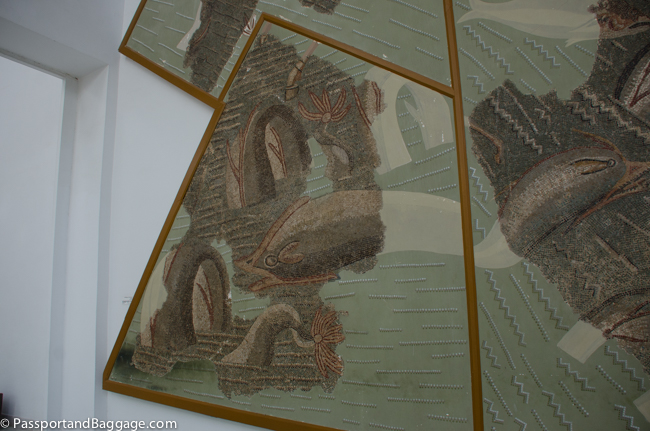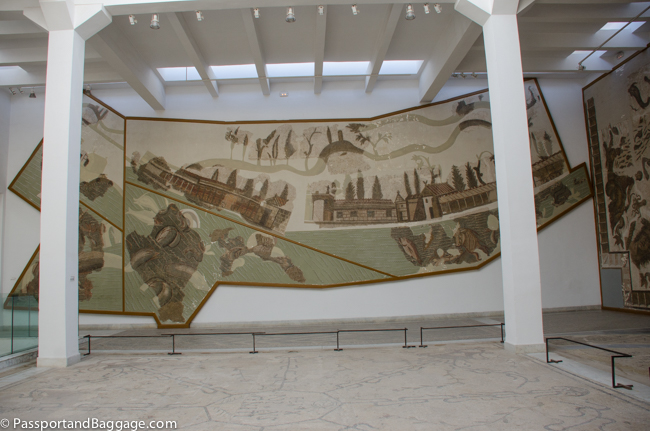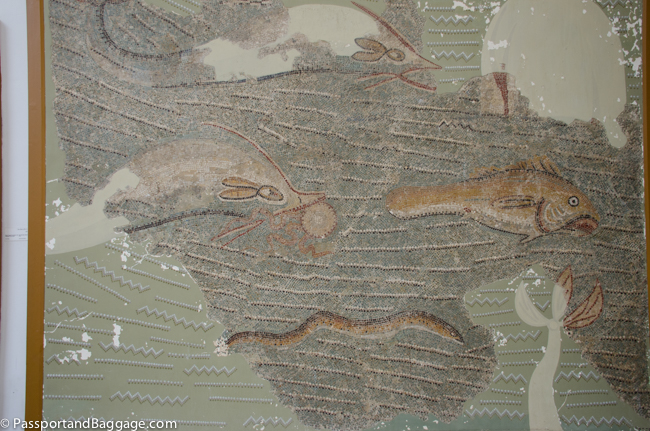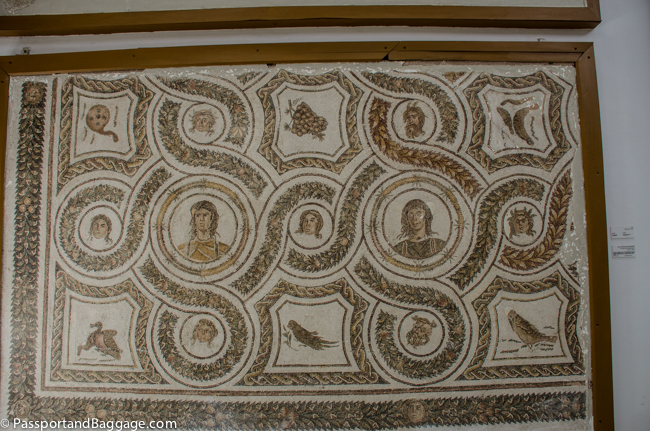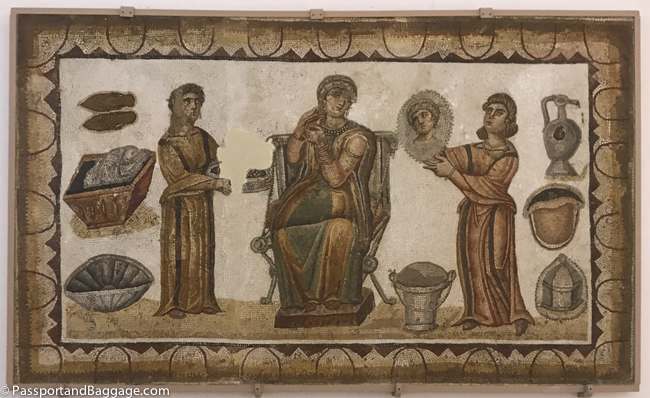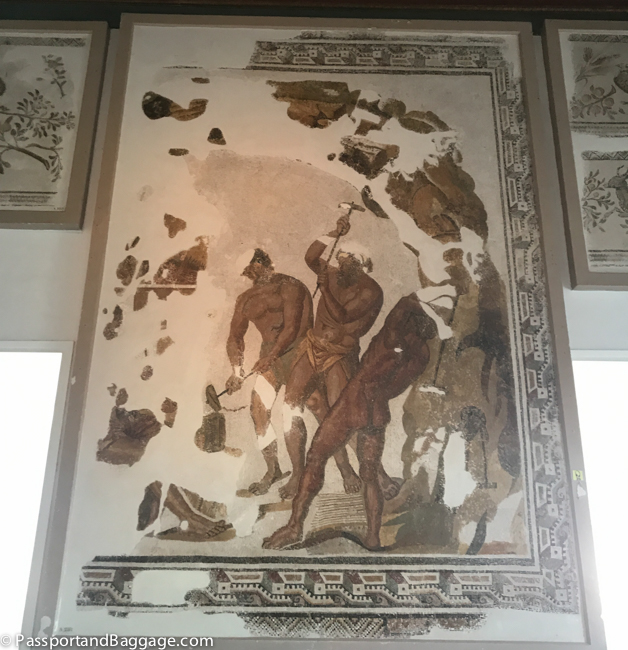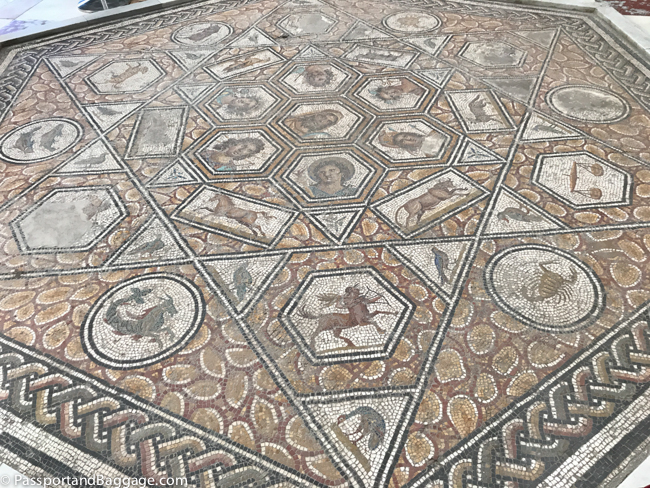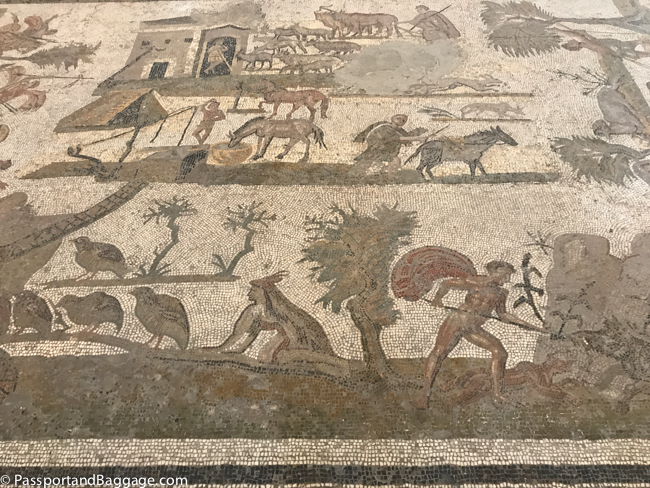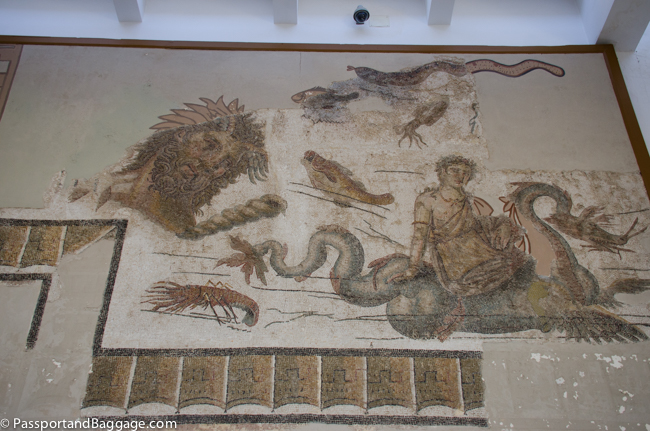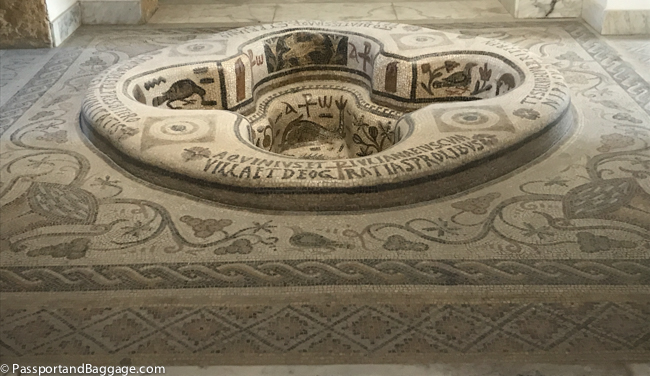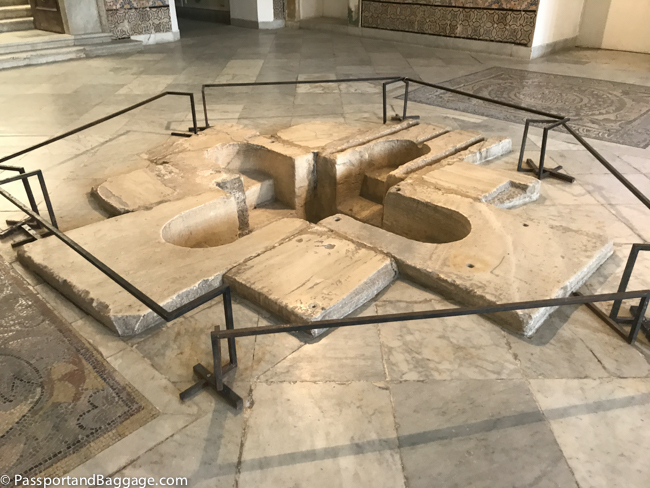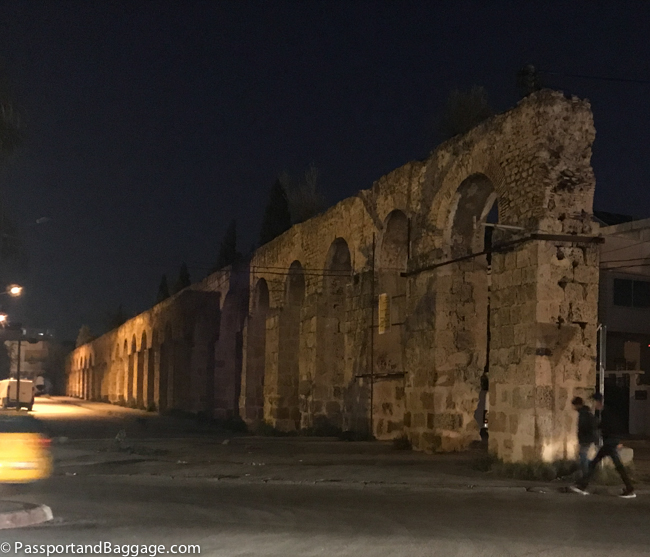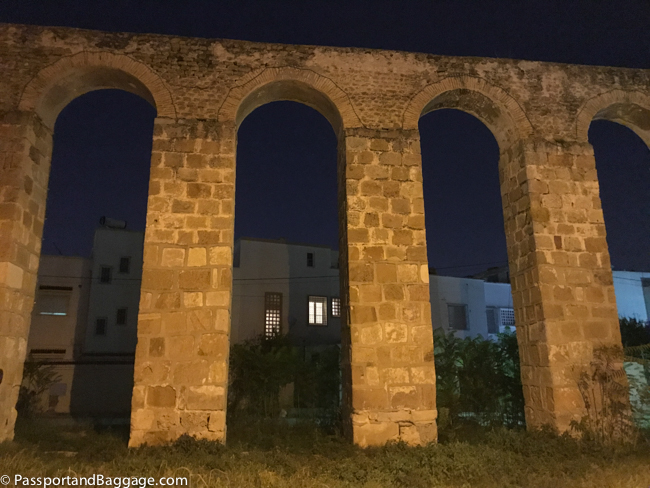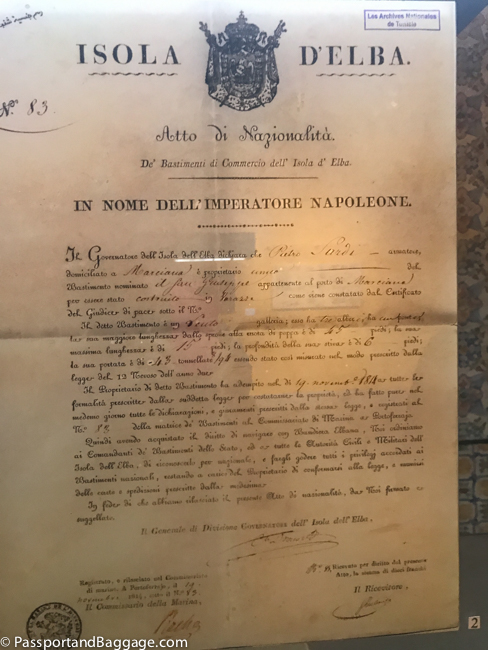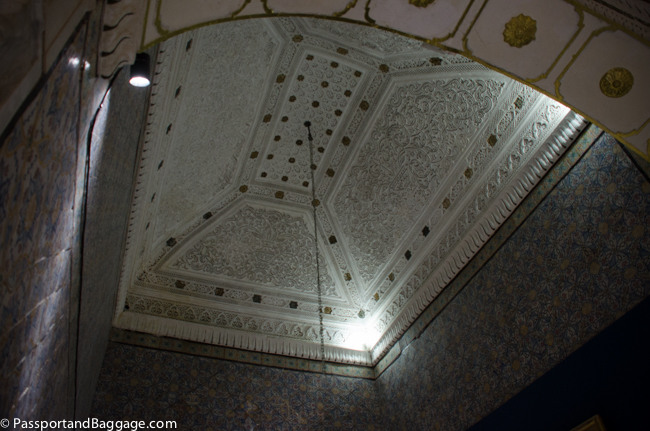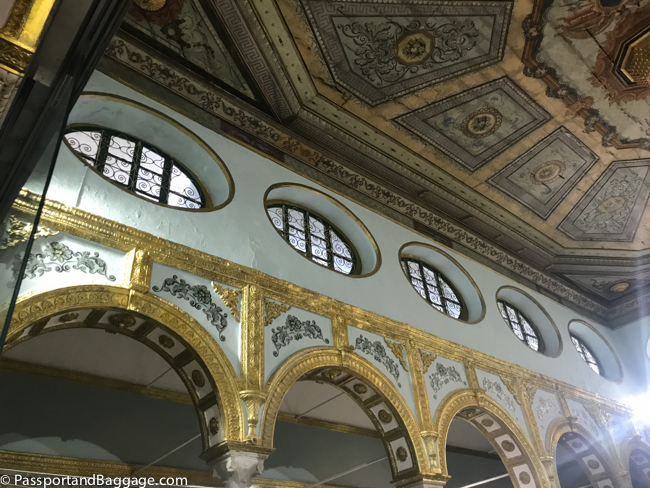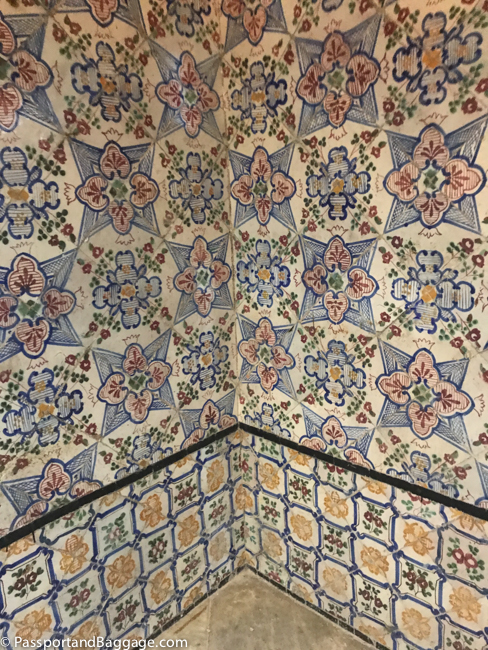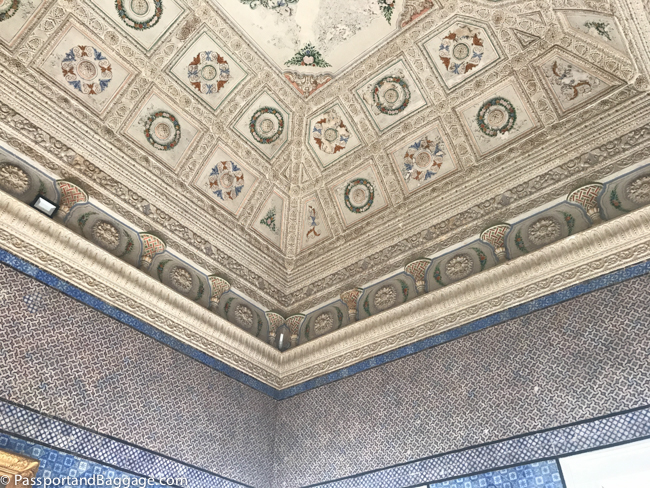November 27, 2019
The Bardo National Museum is said to be one of the most important museums in the Mediterranean and the second on the African continent after the Egyptian Museum.
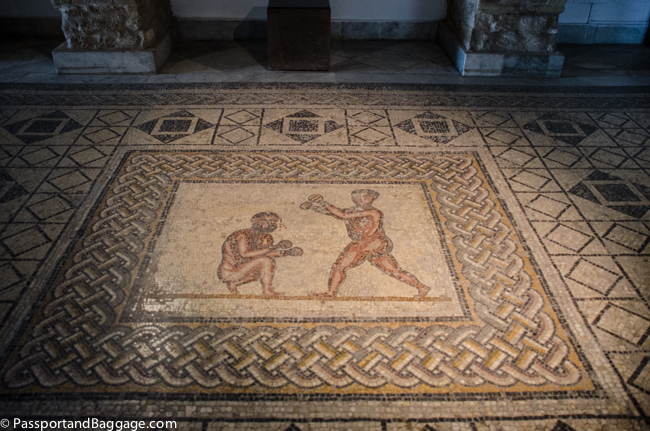 The museum houses one of the largest collections of Roman mosaics in the world, from archaeological sites around the country including Carthage, Hadrumetum, Dougga, and Utica.
The museum houses one of the largest collections of Roman mosaics in the world, from archaeological sites around the country including Carthage, Hadrumetum, Dougga, and Utica.
It is hard for this author to believe that anything could rival the Villa Romana of Sicily, and while these mosaics are not quite as vibrant or colorful, and yes, this is a collection from many sites, and yet their size and their numbers belie belief.
The museum was established on the premises of a Beylical palace. The Beys of Tunis were the monarchs of Tunisia from 1705, when the Husainid dynasty acceded to the throne, until 1957, when the monarchy was abolished.
The Bardo was a fortified Beylical city complex containing a palace, a barracks, a mosque, a hammam, and a suq.
As it is today, the Bardo Palace consists of two sections known as the Little Palace and the Grand Palace.
 The Little Palace is arranged around a courtyard with two opposing porticoes. Each of these is formed by three semi-circular arches on twisted columns and neo-Corinthian capitals.
The Little Palace is arranged around a courtyard with two opposing porticoes. Each of these is formed by three semi-circular arches on twisted columns and neo-Corinthian capitals.
The center of the courtyard’s focal point is a basin of Italian Carrara marble. This material is also used for the paving and for the frames of doors and windows. The walls are lined with beautifully made Tunisian ceramic tiles.
 The two reception rooms have barrel vault roofs or cloister arches decorated with sculpted plaster depicting interlocking rosettes, lambrequin arches or eight-branched stars framed in cypress trees.
The two reception rooms have barrel vault roofs or cloister arches decorated with sculpted plaster depicting interlocking rosettes, lambrequin arches or eight-branched stars framed in cypress trees.
The Grand Palace is built around a courtyard with covered porticoes. These are lit by tall, arched windows and form an upper gallery which, with its cast-iron balustrade, gives the impression of a balcony.
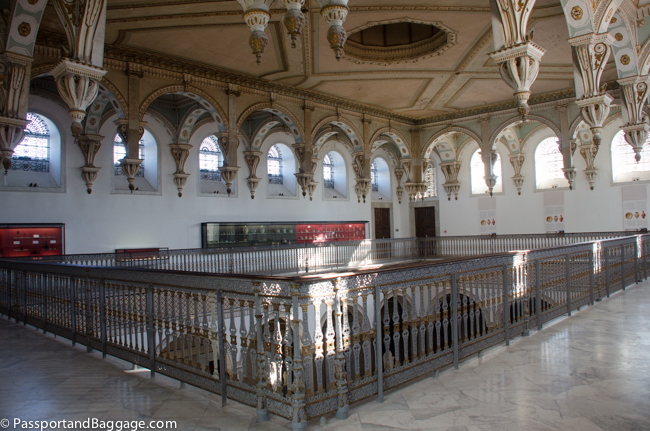 Two luxurious reception rooms face each other. The domed room has a 16-panel dome in carved wood with a hanging stalactite finial at its center. The decoration of coffered panels containing star-shaped rosettes is enhanced by coloring and gilding.
Two luxurious reception rooms face each other. The domed room has a 16-panel dome in carved wood with a hanging stalactite finial at its center. The decoration of coffered panels containing star-shaped rosettes is enhanced by coloring and gilding.
The work was carried out by two Tunisian artisans; Hamda ibn ‘Uthman and Muhammad al-Gharbi.
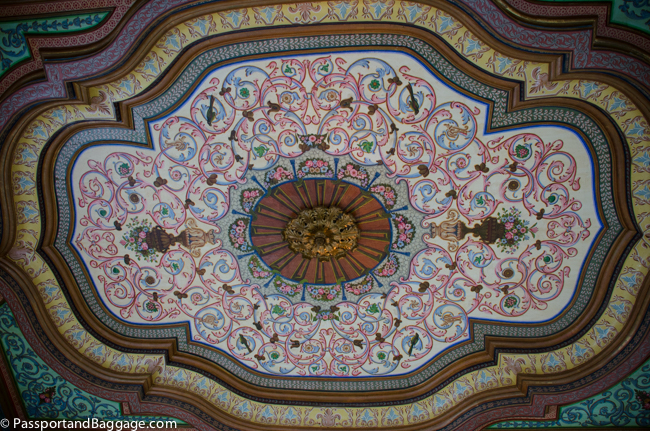 The oblong-shaped side rooms are covered with coffered wooden ceilings with an Italianate decoration; a radiating pattern of foliate scrolls and bouquets in vivid colors.
The oblong-shaped side rooms are covered with coffered wooden ceilings with an Italianate decoration; a radiating pattern of foliate scrolls and bouquets in vivid colors.
Among all of this splendor is the incredibly vast collection of Roman mosaics, that compete with the beauty of the building itself.
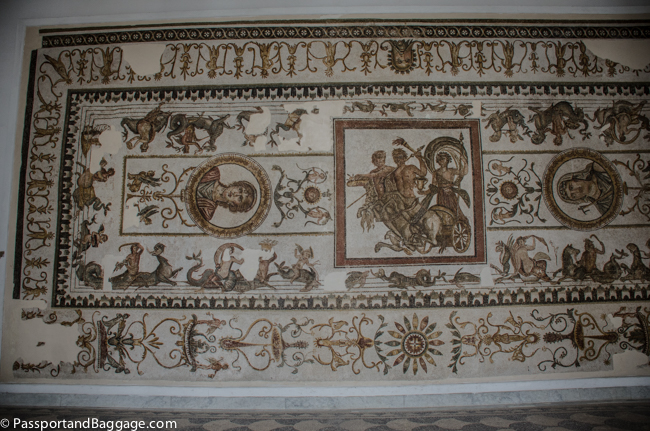
Triumph of Dionysus/Bacchus with Spring and Winter (in medallions) from the “frigidarium” (cold room) of baths at Acholla, north of Sfax.
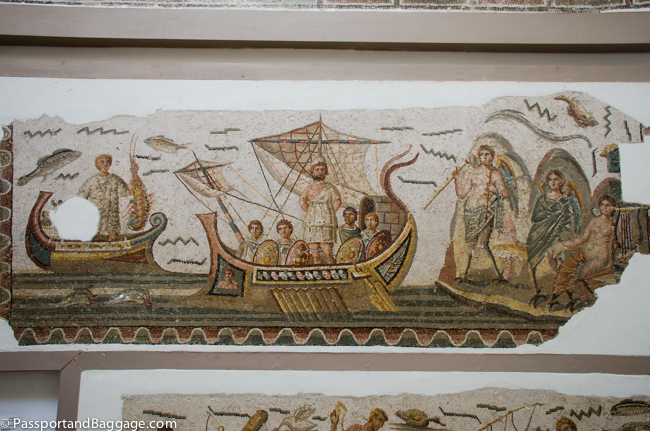
Ulysses bound to the mast of his ship and heroically resisting the calls of the three sirens, also found at Dugga.
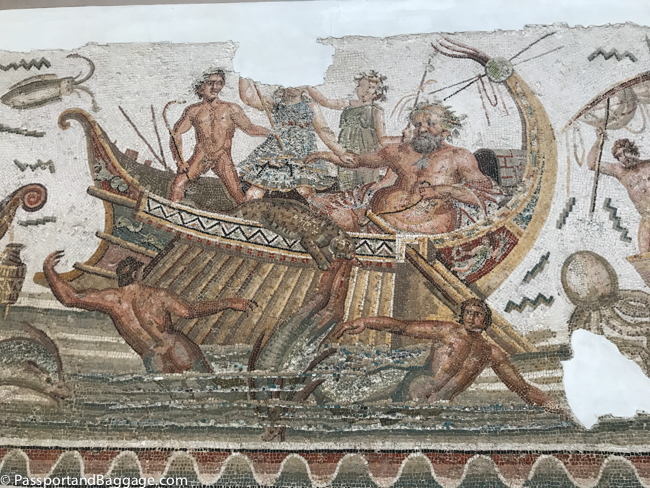
Dated 2nd century AD from Dugga. Dionysus scatters the pirates, who are changed to dolphins, except for Acoetes, the helmsman.
The Bardo houses one of the largest collections of mosaics in the world, these were a very small sampling of what is to be discovered in this museum.
Around the Bardo
The Zaghouan Aqueduct or Aqueduct of Carthage is an ancient Roman aqueduct, which supplied the city of Carthage, Tunisia with water. From its source in Zaghouan, it flows a total of 82 miles, making it amongst the longest aqueducts in the Roman Empire.
The date of the construction of the aqueduct is not entirely clear. Sources mention a visit by Emperor Hadrian in 128, and the end of a 5-year drought. A second event that might have inspired it was the opening of the Baths of Antonius in Carthage in 162. These facilities on the same scale as the Imperial baths in Rome demanded a steady supply of water, which could not be fulfilled with rainwater.
Ksar-Said Palace
The Ksar-Said Palace was the second royal residence of the Husainid dynasty (1705-1957). The core of the palace dates back to the Mouradit Beys of the 17th century.
In 1868 Husainid Bey Mohamed Sadok expropriated the building and executed its original owner, then renamed it Kasar-Said, or Happy Palace.
The building was onced surrounded by vast orchards and manicured gardens with fruit trees and fountains.
On May 12th, 1881 The treaty of Bardo was signed in the palace officially declaring the Regency of Tunisia as a French protectorate.
In 1947 the building was transformed into a sanitorium and in 1981 it was turned over to the Ministry of Culture, whose offices reside in it now.
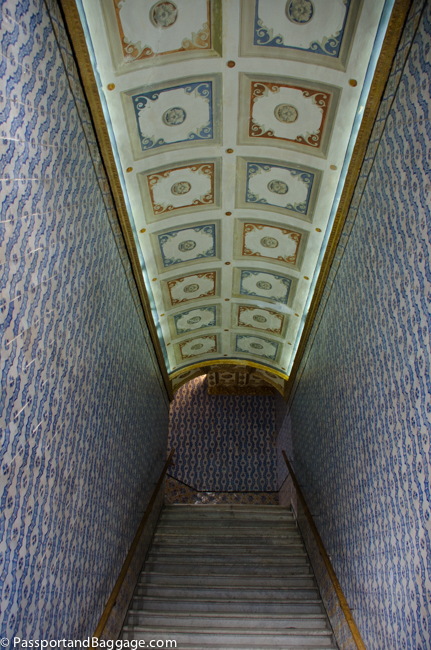
The passageway to the second floor
Visiting the Ksar-Said was only possible as there was an exhibition of the ceremony where Tunisia became a French protectorate. Something, that the Tunisians I had the pleasure of speaking with thought was truly a moment in history worth celebrating.
